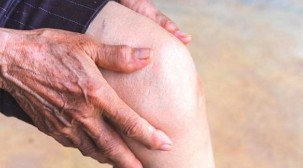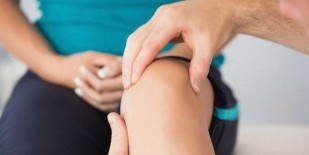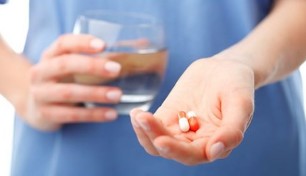Osteoarthritis of the knee (knee osteoarthritis) is a disease characterized by a and on the other hand, degenerative changes in cartilage, menisci, below, and of the bones that form the knee joint. The disease occupies the main place among the pathologies of the locomotor apparatus.

The causes of the gonartrosisy
Osteoarthritis of the knee is polyetiological disease, that is to say, in this state, when the development of lesions contributing to multiple causal factors. In this case we speak of a primary (jia) osteoarthritis (oa). In the second gonartrosise there is an exact causative factor of the disease.
The main causes of osteoarthritis are:
- a knee injury;
- surgical interventions in the area of the tribe.
- increase of the physical load;
- overweight, obesity;
- he was born with a condition is of the lower extremities;
- the syndrome of connective tissue dysplasia;
- the alteration of the metabolism;
- common diseases (diabetes mellitus, rheumatoid arthritis, acromegaly).
Important!
The impact of the agent (ptsd) is the main cause of osteoarthritis in a early age. Injuries of the knee, leading to osteoarthritis, are sprains, fractures, or any damage to the menisci.
On the basis of the development of pathological changes of the need of mobilization of the joint after the injury, which contributes to a deterioration of the blood circulation in periarticular tissues, which, together with the reports of mechanical damage leads to long healing and the development of signs of osteoarthritis.
Increase of the physical load is manifested not only in intense most important classes of physical exercises, but also in the presence of excess weight. The excess of weight and the training, not appropriate to the age and level of physical condition of the person, carried the appearance of fissures in the cartilage or menisci, that is the first link in the process of formation of gonartrosisy.
He was born with a condition is of the lower extremities, referred to the shortening of a limb, dysplasia, as well as valgus or varus deformation of the feet leads to the onset of osteoarthritis due to the uneven distribution of the weight of the person. As a result, it clears the cartilage forms the focus of aseptic inflammation with the appearance of the clinical symptoms characteristic of osteoarthritis.
The syndrome of connective tissue dysplasia is characterized by hyper-mobility, and the lack of ligamentous apparatus. Accordingly, in the joint increases the amplitude of the movements, to the pathological. This instability quickly leads to the emergence of a trauma of the meniscus and of the surface of the joint guidance of the cartilage.
The alteration of metabolism and of the presence of the civil society-the pathology it causes the development of osteoarthritis by violation of the microcirculation in the joint of the knee, impairment of the nutrition of the cartilage and menisci, the deterioration of the composition of the guided intra-articular fluid.
Classification
The code icd-10 – M17. Depending on the etiological contributes to the formation of osteoarthritis, we distinguish the following categories:
- M17.0 – primary gonarthrosis, bilateral;
- M17.1 – the other primary gonarthrosis;
- M17.2 – post-traumatic gonarthrosis, bilateral;
- M17.3 – other post-traumatic gonarthrosis;
- M17.4 – other secondary gonarthrosis, bilateral;
- M17.5 – other secondary gonarthrosis;
- M17.9 – knee osteoarthritis not refined.

Distinguish the following types of osteoarthritis of knee:
- involyutsionniy – occurs due to age-related changes of the body, of the violation of the processes of change, the wear of the articular surfaces of the bones;
- dysplastic associated with congenital anomalies of the lower extremities;
- the post-traumatic stress disorder;
- metabolic – occurs when you share the diseases accompanied by metabolic disorders (to gout, chondrocalcinosis);
- dishormonal – occurs when hormonal imbalances in the body, while the diabetes, the change of life, violations of the functioning of the thyroid gland;
- after set-inflammatory – occurs after infectious-inflammatory diseases of the knee;
- static – manifests itself in excessive effort to a physicist, the incorrect distribution of weight, obesity;
- ischemic – is related to the violation of the vascularization of the knee area.
The pathogenesis of the
The disease develops gradually. First, the changes appear in Podhradie a layer is to form the microcracks. The appearance of cracks is an ongoing task and standing of the knee, one of whose functions is the depreciation of the bumps when walking. And in the case of etiological factors of load on the knee joint increases even more, and the processes of destruction begin to difficult to overcome the recovery processes in the cartilage tissue and, in consequence, appear cracks.
Subsequently, the crack penetrates the fluid and form cysts, which tend to increase and the union. Large cysts start to tighten up the blood vessels that nourish the cartilage, which causes oxygen starvation of cartilage tissue. Violated the metabolic processes, impairs the synthesis of collagen, necessary for cartilage regeneration. Taking into account the bad repair of cartilage, it produces a gradual thinning, which leads to the impairment of the function of the joint, which are the clinical signs of the disease.
In the note!
When the progression they begin to form osteophytes, bony expansion. Osteophytes are mainly found here on the edges of the articular surfaces of the bones. Its presence causes expressed by an inflammatory response in the joint, pain, joint deformity, the great limitation of the mobility.
During the development of the inflammatory process causes inflammation of the tissues, which leads to an increase of the pressure in the joint, the deterioration of the composition of the guided intra-articular fluid, alters the nutrition of the cartilage.
The clinical symptoms of the
In the course of the disease distinguish several degrees of osteoarthritis, which reflect the process of progression of injury and who have certain clinical manifestations.
The symptoms of osteoarthritis of the knee is accepted to divide into phases:
- The initial phase of the disease is characterized by the appearance of pain in the area of the knee, especially after an intense physical activity or prolonged, is found in the legs. Least favorable of the static load, that is to say, the lifting of weights. The joint pain passes by itself after holiday. In addition to the pain may appear a creaking or clicking in the joint, which makes record label reveal a violation of the congruence of the articular surfaces of the bones that make up the joint, and the appearance of fissures in the cartilage. The lack sharply expressed clinical signs does that the majority of patients do not seek medical attention in the initial phase, which leads to the subsequent diagnosis.
- The progression of the disease leads to the formation of more explicit pain syndrome – the pain occurs even after low-load, by itself, passes. Appears morning stiffness, joint-guided, of a duration of about 30 minutes, but if you join the inflammation, the stiffness can last up to 1 hour. Due to the expressed by the pain of the person begins to respect the leg, reduces the amplitude of the movements, it appears the lameness. Because of the inflammation of the tissues of the knee increases in volume. Appear x-rays symptoms of osteoarthritis of the knee.
- The appearance of osteophytes characterized the development of the stage 3 of the disease, in which the strong defined pain syndrome even at rest, poorly jugulate of medications. The movement does not exist in practice, the joint is deformed. It is possible stiffness of the knee in a certain position, as well as dislocations or subluxations.

A diagnostic test
The diagnosis of osteoarthritis is the sum of several components:
- The patient's complaints.
- The history of the development of the disease.
- The life history of the patient.
- Laboratory tools and research techniques.
In virtue of the complaints of the patient, as well as of the history of life and of the disease, the doctor takes out the vista diagnostic. But to make a differential diagnosis with other pathologies and to establish the exact diagnosis must be carried out, tests of laboratory and technical tools.
The technical tools of study of the knee joint are:
- the x-ray;
- arthroscopy;
- ct scan;
- ultrasound;
- the magnetic resonance imaging.
Important!
The main tool in the diagnosis of osteoarthritis is x-rays of the survey. X-rays of the knee is performed in two planes, which provides a comprehensive picture of the changes. It is important to note that in the initial stages of osteoarthritis in the photo is not revealed.
When there is radiographic signs of builds x-ray classification gonartrosisy:
- 1 degree – a small narrowing of the joint cleft;
- Grade 2 – a small narrowing of the joint cleft, the presence of the cord of the seal;
- 3 grade – expressed by the narrowing of the joint cleft, the presence of osteophytes, initial signs of deformation bone;
- 4th grade – expressed by the narrowing of the joint cleft to its total absence, numerous osteophytes, destruction of bone tissue, the deformation of the joint.
The rest of the methods of the survey of the knee are a basic complement of the x-ray study. And carried out as an additional diagnosis when the difficulty in the diagnosis.
Each one of the diagnostic methods has its indications, contraindications and different costs, so it necessarily must be assigned to a specialist if necessary.
How to cure osteoarthritis of the knee
The treatment of osteoarthritis of the knee should begin at the onset of the first clinical symptoms of the disease. The current treatment of osteoarthritis of the knee is directed to the restoration of joint function and improving the quality of life of patients and consists of the following:
- the cessation or reduction of the painful sensations;
- the treatment of the inflammatory process;
- the recovery of the cartilage structure;
- the increase of the amplitude of the movements;
- the improvement of the microcirculation periarticular tissues.

In the note! It is important to note that in the different stages apply different methods of treatment. If it is appropriate to begin to fight back against the disease, you can get rid of not only the pain but also recover the joint of the knee osteoarthritis, as well as to avoid the occurrence of complications.
Applied drug therapy helps to reduce pain and the inflammatory response, this is achieved by the application of non-steroidal anti-inflammatory drugs. For cartilage regeneration are assigned chondroprotector. The scheme of treatment is assigned and controlled by the physician.
In the complement to medical treatment are assigned physical therapy procedures, ointments, gymnastics, massage or guided intra-articular injection of drugs.
That the cure for the osteoarthritis of the knee
In this case, it allows for the admission of gelatin, which can be taken inside or make a compress. The traditional medicine should not be designated as a monotherapy, and be part of the suite of treatment activities. Before you start this treatment in the home, you need to familiarize yourself with the recommendations and comments.
Is it possible to cure osteoarthritis
When used incorrectly or late treatment of the effects of the progression of the disease does not make ğsemántica. Knee osteoarthritis dangerous, because even with the right treatment and you can't stop the process entirely, and only slows, but allows the person more time to save the activity.
If the disease has reached an advanced stage, conservative treatment becomes ineffective. If in 3 stages go on to a surgical treatment, after that requires a long rehabilitation.




























